
The Forum Boarium was the cattle forum venalium of ancient Rome. It was located on a level piece of land near the Tiber between the Capitoline, the Palatine and Aventine hills. As the site of the original docks of Rome, the Forum Boarium experienced intense commercial activity.

The Forum Holitorium is an archaeological area of Rome, Italy, on the slopes of the Capitoline Hill. It was "oddly located" outside the Porta Carmentalis in the Campus Martius, crowded between the Forum Boarium and buildings located in the Circus Flaminius.
In ancient times it was the fruit and vegetable market, while the area of the adjacent Forum Boarium served as meat market. It also included a sacred area with three small temples dedicated to Janus, Spes and Juno Sospita.
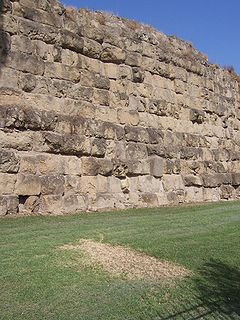
The Servian Wall was an ancient Roman defensive barrier constructed around the city of Rome in the early 4th century BC. The wall was built of volcanic tuff and was up to 10 m (33 ft) in height in places, 3.6 m (12 ft) wide at its base, 11 km (6.8 mi) long, and is believed to have had 16 main gates, of which only one or two have survived, and enclosed a total area of 246 hectares. In the 3rd century AD it was superseded by the construction of the larger Aurelian Walls as the city of Rome grew beyond the boundary of the Servian Wall.

The Basilica Julia was a structure that once stood in the Roman Forum. It was a large, ornate, public building used for meetings and other official business during the Roman Empire. Its ruins have been excavated. What is left from its classical period are mostly foundations, floors, a small back corner wall with a few arches that are part of both the original building and later Imperial reconstructions and a single column from its first building phase.

The Ficus Ruminalis was a wild fig tree that had religious and mythological significance in ancient Rome. It stood near the small cave known as the Lupercal at the foot of the Palatine Hill and was the spot where according to tradition the floating makeshift cradle of Romulus and Remus landed on the banks of the Tiber. There they were nurtured by the she-wolf and discovered by Faustulus. The tree was sacred to Rumina, one of the birth and childhood deities, who protected breastfeeding in humans and animals. St. Augustine mentions a Jupiter Ruminus.
The Pons Sublicius is the earliest known bridge of ancient Rome, spanning the Tiber River near the Forum Boarium downstream from the Tiber Island, near the foot of the Aventine Hill. According to tradition, its construction was ordered by Ancus Marcius around 642 BC, but this date is approximate because there is no ancient record of its construction. Marcius wished to connect the newly fortified Janiculum Hill on the Etruscan side to the rest of Rome, augmenting the ferry that was there. The bridge was part of public works projects that included building a port at Ostia, at the time the location of worked salt deposits.
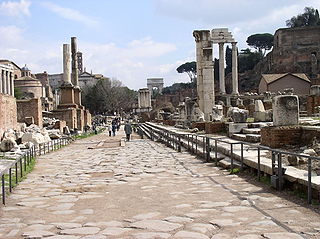
The Via Sacra was the main street of ancient Rome, leading from the top of the Capitoline Hill, through some of the most important religious sites of the Forum, to the Colosseum.

The Temple of Hercules Victor or Hercules Olivarius ( is a Roman temple in Piazza Bocca della Verità in the area of the Forum Boarium near the Tiber in Rome. It is a tholos, a round temple of Greek 'peripteral' design completely surrounded by a colonnade. This layout caused it to be mistaken for a temple of Vesta until it was correctly identified by Napoleon's Prefect of Rome, Camille de Tournon.
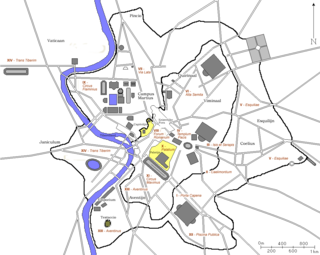
In 7 BC, Augustus divided the city of Rome into 14 administrative regions. These replaced the four regiones—or "quarters"—traditionally attributed to Servius Tullius, sixth king of Rome. They were further divided into official neighborhoods.

The Saepta Julia was a building in the Campus Martius of Rome, where citizens gathered to cast votes. The building was conceived by Julius Caesar and dedicated by Marcus Vipsanius Agrippa in 26 BCE. The building replaced an older structure, called the Ovile, built as a place for the comitia tributa to gather to cast votes. The Saepta Julia can be seen on the Forma Urbis Romae, a map of the city of Rome as it existed in the early 3rd century CE. Part of the original wall of the Saepta Julia can still be seen right next to the Pantheon.

The Shrine of Venus Cloacina — the "Shrine of Venus of the Sewer" — was a small sanctuary on the Roman Forum, honoring the divinity of the Cloaca Maxima, the spirit of the "Great Drain" or Sewer of Rome. Cloacina, the Etruscan goddess associated with the entrance to the sewer system, was later identified with the Roman goddess Venus for unknown reasons, according to Pliny the Elder.
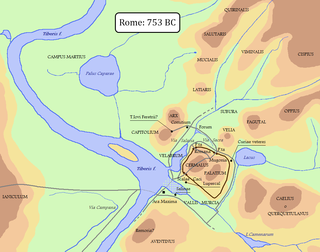
The Palus Caprae was a site within the Campus Martius in Ancient Rome. In Roman mythology, the Palus Caprae was the place where Romulus underwent ascension into godhood.

Fortuna Huiusce Diei was an aspect of the goddess Fortuna, known primarily for her temple in the Area Sacra di Largo Argentina at Rome. Cicero lists her among the deities who should be cultivated in his ideal state, because "she empowers each day". She thus embodies an important aspect of time as it figures in Roman religion: every day of the year had a distinct and potent nature, which the public priests were responsible for knowing and aligning the community with by means of the religious calendar.

The Porta Carmentalis was a double gate in the Servian Walls of ancient Rome. It was named for a nearby shrine to the goddess or nymph Carmenta, whose importance in early Roman religion is also indicated by the assignment of one of the fifteen flamines to her cult, and by the archaic festival in her honor, the Carmentalia. The shrine was to the right as one exited the gate.

Porticus Aemilia was a portico in ancient Rome. It was one of the largest commercial structures of its time and functioned as a storehouse and distribution center for goods entering the city via the Tiber river.
The Temple of Pudicitia Patricia was a small shrine in ancient Rome, located in the Forum Boarium. It was described as being next to the Temple of Hercules Victor.
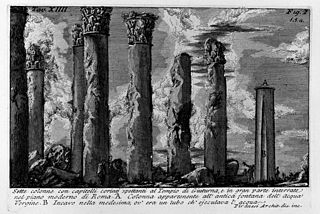
The Temple of Matidia was a Roman temple on the Campus Martius in ancient Rome dedicated to Salonia Matidia, who was deified after her death in 119 by her son-in-law Hadrian. He began construction immediately after her deification, choosing a site near the Pantheon and the Saepta Julia, both of which he restored or rebuilt. A lead water pipe inscribed 'templo matidiae' was found near Sant'Ignazio, which may indicate the temple's location. After Hadrian died and was deified, his own temple was built next to that of Matidia.
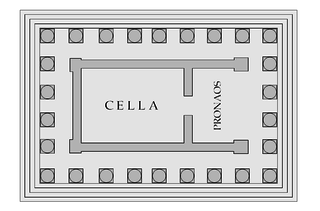
The Temple of Mars was a temple built on the campus Martius in Rome in the 2nd century BC, near the Circus Flaminius, dedicated to Mars.
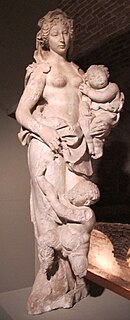
Remoria is a place associated with the legendary founding of Rome by Romulus and Remus where, according to Roman tradition, Remus saw six birds land and which he chose as an auspicious location for the future city. It is also where he was buried, after being killed by his brother Romulus during a dispute.

The Domus Tiberiana was an Imperial Roman palace in ancient Rome, located on the northwest corner of the Palatine Hill. It probably takes its name from a house built by the Emperor Tiberius, who is known to have lived on the Palatine, though no sources mention his having built a residence. It was enlarged by the successors to Tiberius, and would have been the principal Roman residence of Tiberius, Caligula, Claudius, and Nero during the early part of his reign. Relatively little is known of the structure archaeologically, since the Farnese Gardens have occupied the site of the main level since the 16th century, making excavation difficult.